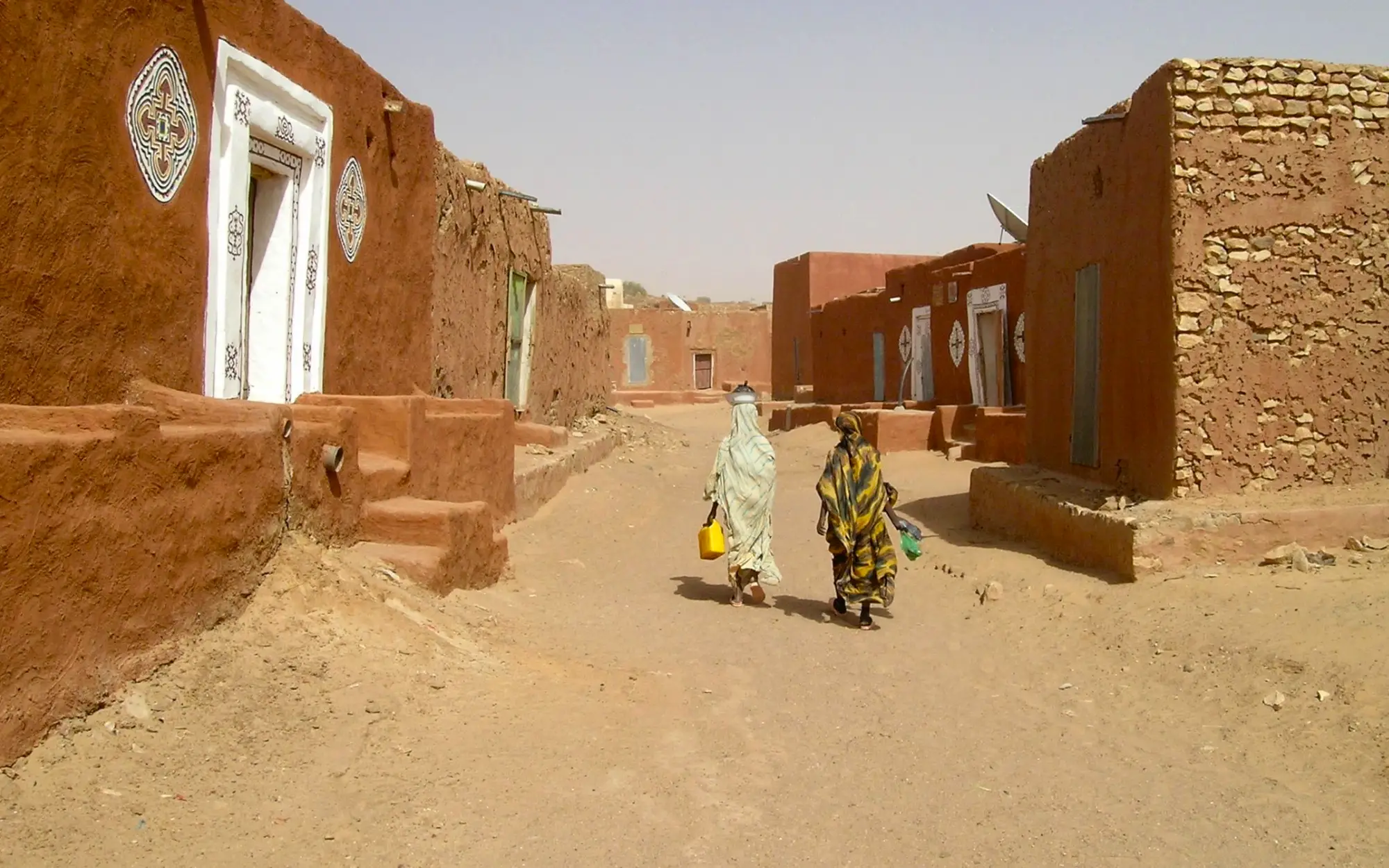
The millenary ksurs of Mauritania, commercial and religious centers on the Sahara routes
In the heart of the vast sandy expanse of the Sahara, in the Adrar massif, hides a historical and cultural legacy of great importance, the ancient ksurs of Ouadane, Chinguetti, Tichit and Oualata.
These millenary cities of Mauritania, in northwest Africa, have stood firm against the inexorable advance of time and sand, and are silent witnesses to the ancient trade routes, cultural exchanges and religious traditions that have shaped the region for centuries.
The ancient ksurs - fortified towns - were founded between the 11th and 13th centuries as supply and refuge points for caravans and travelers crossing the Sahara desert, forming part of the region's trade routes. Initially conceived as commercial centers, they soon became bastions of Islamic culture and its diffusion to the nomadic populations of the desert.
Its unique structure and architecture consists of a fortified complex of houses huddled together along narrow streets around a mosque with a square minaret. All the buildings are made of adobe and sandstone, adapted to the extreme climatic conditions.
Ouadane is the northernmost ksar -singular of ksurs- located approximately in the geographical center of Mauritania. It was founded in the 12th century on the remains of an abandoned city of the 8th century. By the 14th century it was already an important point on the Saharan trade routes. Together with Chinguetti they form part of the route through the Adrar desert, a harsh but beautiful landscape of dunes.
Founded in the 11th and 13th centuries around the caravan routes that crossed the Sahara, these unique adobe and sandstone fortified towns became focal points for the spread of Islamic culture and important commercial centers in the region.

Minaret of the Chinguetti Friday Mosque.
While Ouadane lost importance due to internal instabilities, Chinguetti, also founded in the 12th century, flourished, partly thanks to its salt mines. It is the westernmost of the ksurs and the most important. Towards the XVII century, it already combined as part of its importance the commercial, religious and scientific aspects, since it housed many of the most important Islamic schools of the west of the Sahara, containing libraries with manuscripts of great value.
The third ksar is Tichit, which in the 11th century was one of the main cities of the vast Berber empire on the edges of the Sahara. Located halfway between Ouadane and Oualata, it benefited greatly from the trade routes between the two previous cities and also by being located on the outskirts of the Sudanese empires of the Niger region.
The last of the four cities is Oualata, located in the extreme eastern south of Mauritania. During the 15th century it received the immigration of elites from Timbuktu, who were fleeing from the Tuareg. It was an important commercial and cultural center in the Western Sahara region for centuries, and was a key point on the trans-Saharan trade route. It also stands out for the decoration of their homes with geometric designs, being one of the best examples of popular architecture of the desert.
These four ancient cities, cultural and archaeological treasures, are the only places that have survived the passage of time and are still standing to tell the story of the region, and were inscribed by UNESCO in 1996 on the list of monuments that are World Heritage Sites.
Welcome to Mauritania!
Share this Sight with: